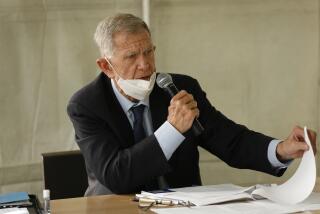L.A. is uneasy about order to move homeless people from freeways. ‘There’s ethical issues’
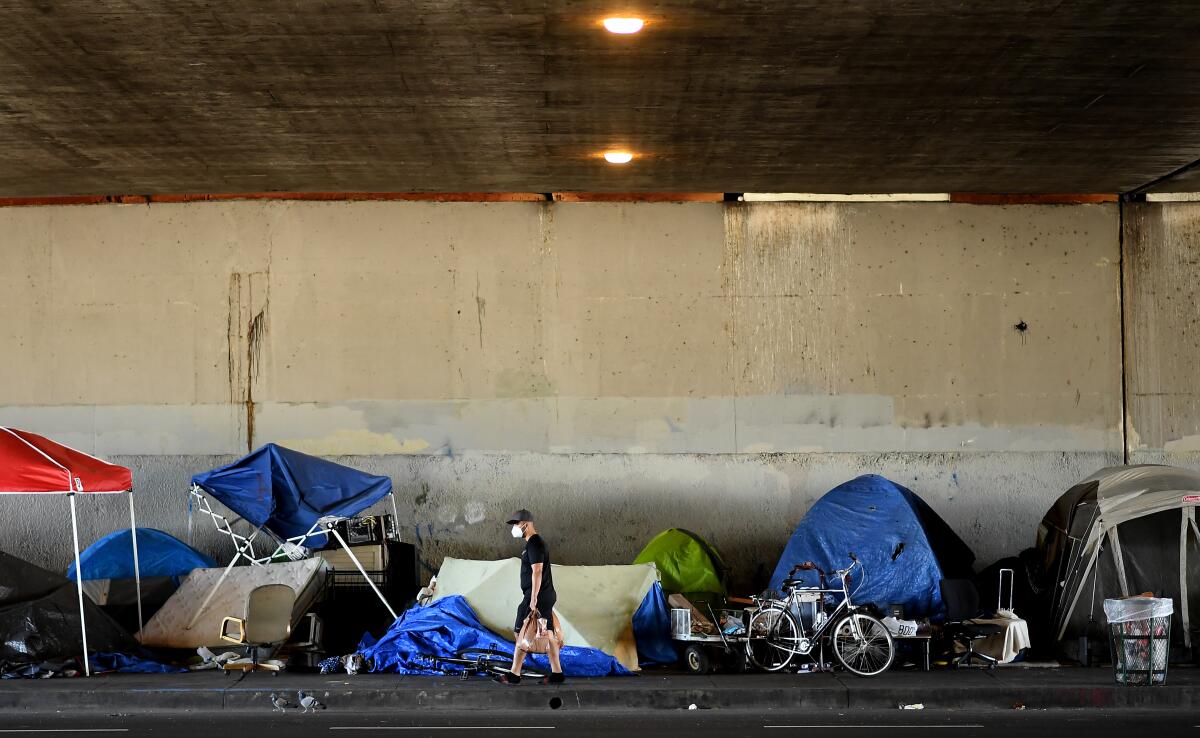
- Share via
A federal judge’s sweeping order to move thousands of homeless people away from freeways in Los Angeles is drawing objections from advocates and Mayor Eric Garcetti who fear it could lead to confrontations with police and endanger the health of those living on the streets during the coronavirus outbreak.
In the order issued last week, U.S. District Judge David O. Carter called for the relocation of up to 7,000 people living near overpasses, off-ramps and on-ramps, saying they face severe health risks from tailpipe emissions and car crashes.
If carried out, it would mark a major shift in policy in a city and county that have seen a record number of people living in tents and makeshift shelters in recent years. Following a series of court rulings and legal settlements, efforts to clear encampments from sidewalks and other public spaces have been heavily restricted.
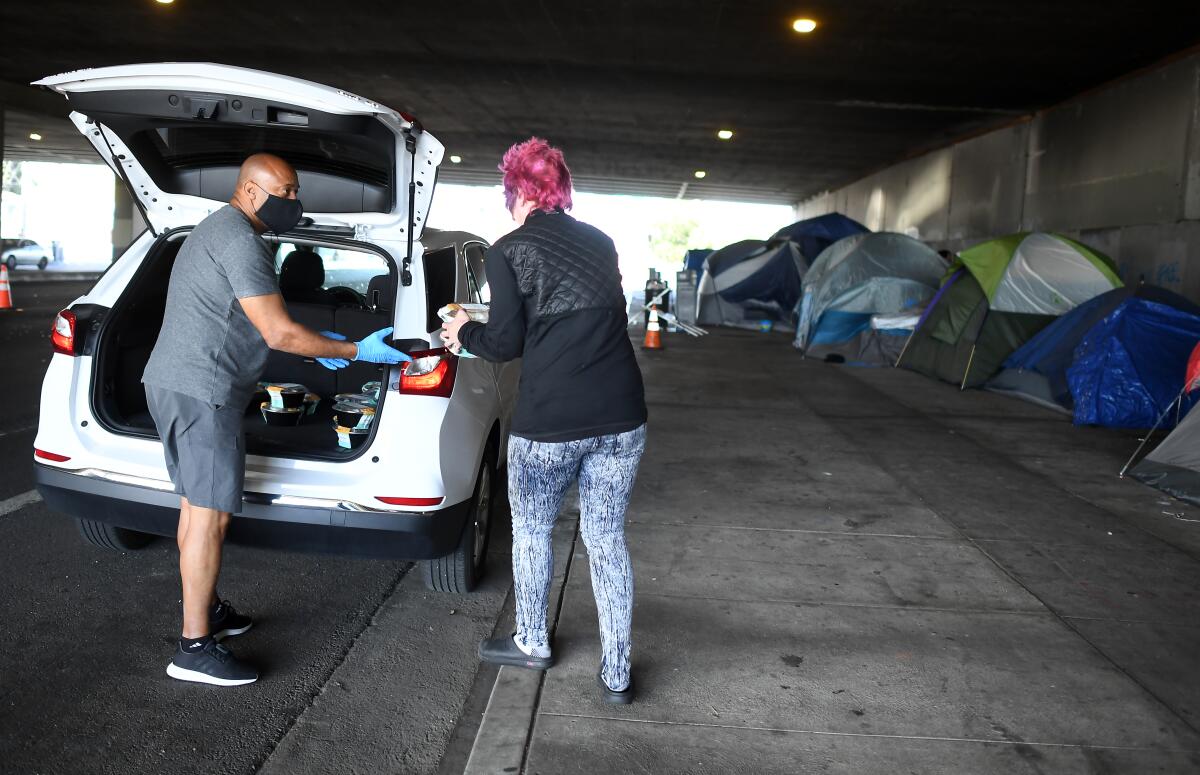
The order is set to take effect on Friday. On Wednesday, city and county officials will present the judge with plans for how they will respond to his order.
In recent days, Garcetti and others have voiced fears that Carter’s order, depending on how it is carried out, could result in homeless people being moved, but not into housing or shelters. Doing so, the mayor said, is of particular concern during the pandemic.
The Centers for Disease Control and Prevention advised state and local governments in April against clearing homeless encampments as doing so could “cause people to disperse throughout the community” — increasing the potential spread of the virus among people who are especially vulnerable to dying of COVID-19.
“There’s ethical issues. There’s health issues. And then there’s just logistical issues,” Garcetti told The Times. “I don’t know who could enforce this besides a law enforcement officer. I don’t think I want those images. That’s not good for us. That’s not good for the people who are traumatized on the streets.”
Garcetti and others involved in addressing the region’s homelessness crisis said Carter’s order took them by surprise.
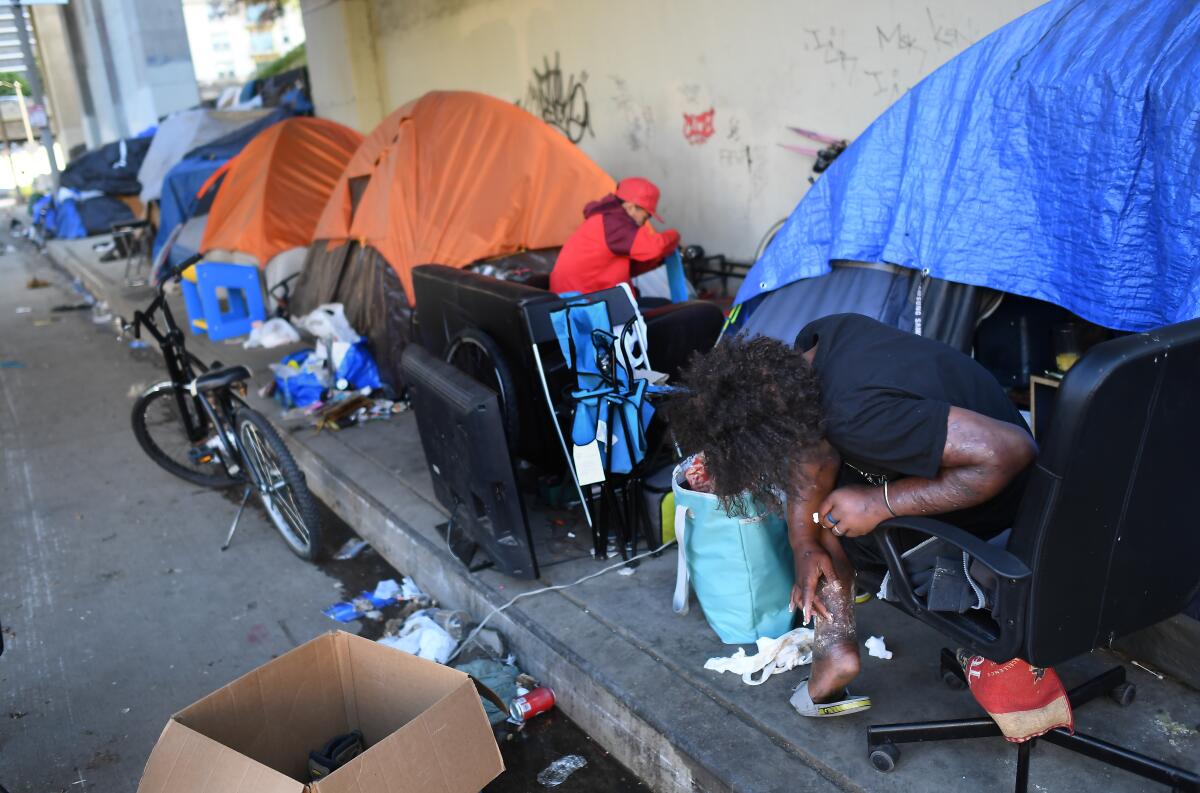
The order is part of an ongoing legal battle initiated by the L.A. Alliance for Human Rights, a group of downtown business owners and residents who allege that the city and county have failed to protect the public and provide adequate shelter for people living on the streets.
The issue of encampments along freeways emerged in the case last month after city officials proposed using a Caltrans property at 16th and Maple streets — part of which is under the 10 Freeway — to house homeless shelters made of pallets. Homeless advocates questioned the wisdom of that proposal, pointing to the health risks posed by vehicle emissions.
Studies have found that those who live near high concentrations of traveling cars and trucks — and are living in housing — are more likely to experience asthma, breathing problems, diabetes and other medical issues, said Ed Avol, professor and chief of the environmental health division at USC’s Keck School of Medicine.
“Being near vehicle emissions is problematic for a whole range of health reasons that just begin with the lungs and go on to brain issues, heart issues, and metabolic issues, not just for children but for adults,” he said.
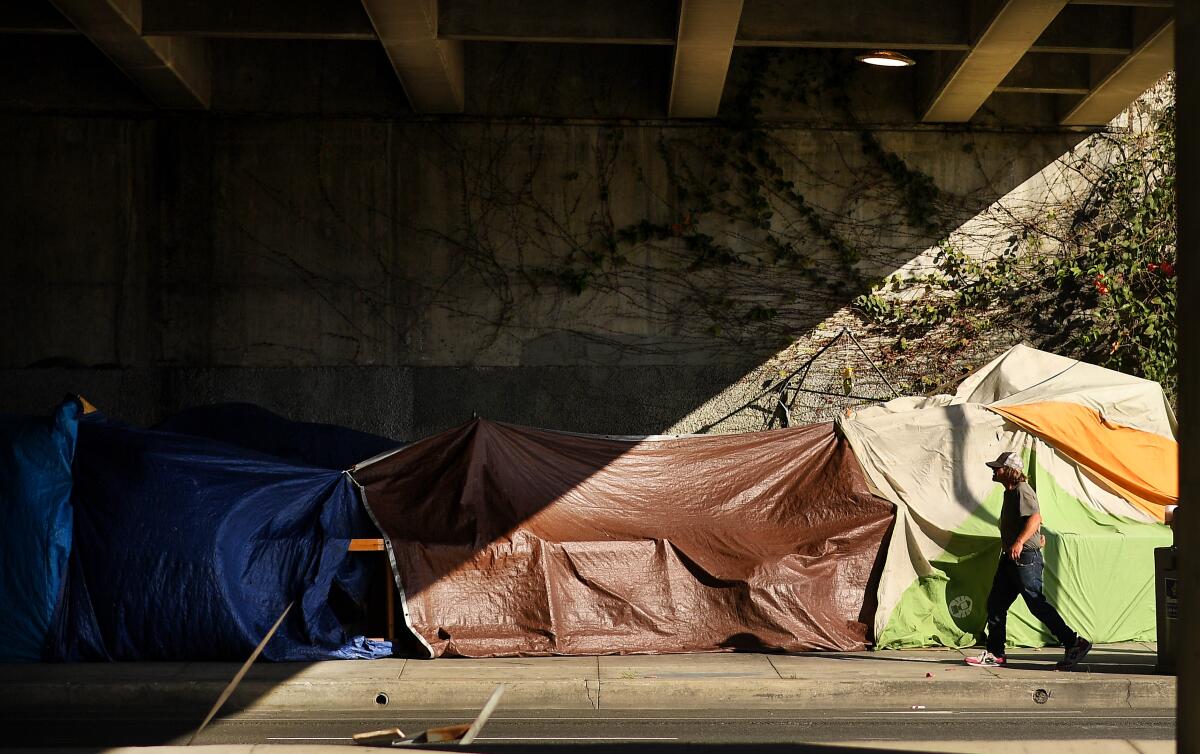
The proposal for pallet shelters on the Caltrans property was scuttled after city and state officials also raised concerns about whether emissions from the freeway rendered the site unsafe.
Carter responded by questioning why anyone, whether they are in shelters or not, should be permitted to live near such high traffic locations. He warned that arguments about air quality would spark questions about “why isn’t every underpass being cleared.” The judge also argued that such locations also are dangerous because of the potential collapse of an overpass during an earthquake.
“The court has continued to learn from the parties, as well as other participants in hearings and conferences, it has become clear that many homeless individuals face an additional, immediate health hazard as a result of camping near freeway overpasses, underpasses, and ramps,” he wrote.
Carter, who has repeatedly visited skid row and other encampments across the region, has said he wants the parties to offer a host of alternatives and is willing to shape his edict based on their proposals.
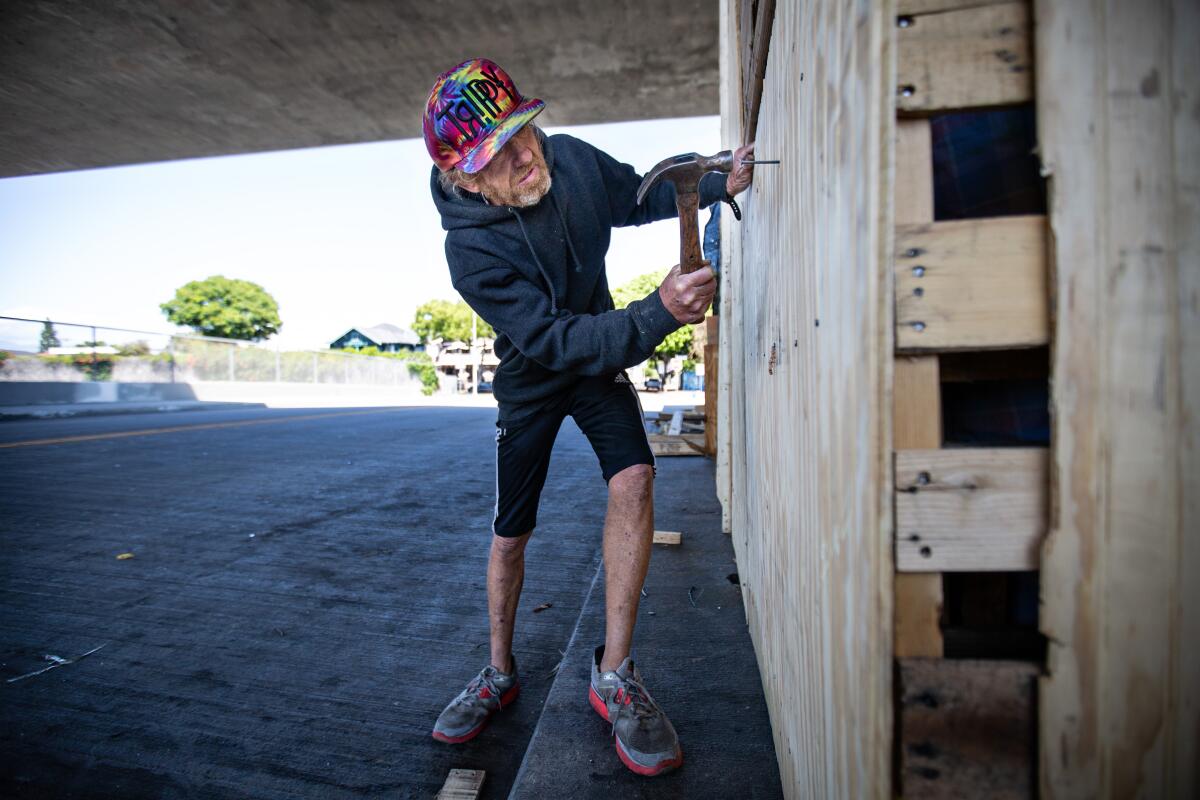
Pete White, executive director of the antipoverty group Los Angeles Community Action Network, said he is definitely worried that an order to clear encampments would mean enforcement from LAPD and the county Sheriff’s Department. White said it’s also not clear where homeless people would go if they had to be relocated.
“I believe Judge Carter is really invested in getting something done,” said White, whose group has intervened in the case being heard by Carter. “The danger with simply getting something done is that oftentimes you forget about the nuance and the fact that details matter.”
So far, Carter’s court has served as a freewheeling clearinghouse for discussions on the city and county’s responses to both the homelessness crisis and the COVID-19 pandemic. Garcetti, L.A. County Supervisor Kathryn Barger and many other local politicians have shown up to testify as the judge has pushed for permanent solutions.
The order could test the limits of Martin vs. City of Boise, a federal ruling on homelessness by the 9th U.S. Circuit Court of Appeals, which concluded that it’s unconstitutional to punish people for sleeping on the sidewalk when there aren’t enough shelter beds or housing units available as alternatives.
The U.S. Supreme Court allowed the ruling to stand in December, leaving in place limits on the ability of cities and counties across California and the West to enforce anticamping laws without increasing the capacity of shelters.
Carter said he would allow the city and county to enforce their anticamping laws if they provided alternative places for people to bed down for the night —homeless shelters, hotel rooms, RVs, parking lots and other locations. He also argued that because public health and safety is involved, he has the authority to act.
Since the coronavirus outbreak, city and county officials have secured more than 3,300 hotel beds, more than half of which are occupied. Garcetti also has set up about 1,000 emergency shelter beds in converted city recreation centers. Still, those two strategies have served only a fraction of the region’s homeless population of nearly 60,000.
Sarah Dusseault, chairwoman of the Los Angeles Homeless Services Authority, said her agency is focusing not on people near freeways, but on finding hotel rooms for the 15,000 homeless people who are 65 or older or have health conditions, such as respiratory problems or diabetes, that make them more susceptible to the coronavirus, regardless of where they live.
That effort, she said, is already “a heavy lift.”
“We have to stop the spread,” Dusseault said. “We have to keep people safe and that’s our primary focus.”
Mark Ryavec, president of the Venice Stakeholders Assn. and a longtime critic of the city’s handling of homelessness, questioned Carter’s decision to focus on areas near freeways. Homeless people set up camp at overpasses because the concrete structure provide protection that other outdoor areas do not.
“It’s shelter from rain, from night dew, from heat,” he said.
Attorney Shayla Myers, who represents White’s group and other homeless advocates, said last week in court that freeway overpasses are areas where people “survive on a sidewalk” and comply with federal laws requiring room for wheelchairs to pass. While she acknowledged the concerns about tailpipe emissions, she said overpasses might still be better than what’s presently available.
Myers, who works for the Legal Aid Foundation of Los Angeles, said any federal order on freeway encampments would need to ensure that homeless residents are not sent to places where they face greater exposure to COVID-19 or are quickly uprooted again.
“People are going to keep going back to the underpasses and overpasses if they’re still being displaced in other places,” she said.
Garcetti said city officials intend to present their ideas to Carter this week and try to get a better understanding of his wishes. The ultimate goal, he said, is to get people into housing.
“Don’t get me wrong. Living under gas fumes is not good,” Garcetti said. “But there’s 100 health concerns we have on the streets. This is one of them.”
More to Read
Sign up for Essential California
The most important California stories and recommendations in your inbox every morning.
You may occasionally receive promotional content from the Los Angeles Times.
